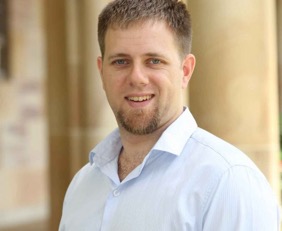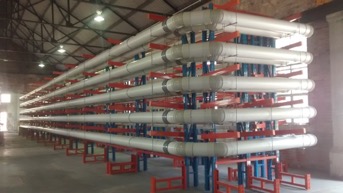Meet our PhDs – Adam Shypanski
Hi, I am Adam Shypanski
I have a Bachelor of Science (Environmental Engineering) from the University of Alberta (Canada), and a Master of Science (Environmental Engineering) from Western University (Canada). Before starting my PhD studies, I worked in the environmental remediation and hazardous materials management sector, then in the water and wastewater sector.

About my PhD work
PhD topic: Impacts of water demand management on sewer resilience
University: University of Queensland, Advanced Water Management Centre
CRCWSC project in which you were involved: Managing interactions between decentralised and centralised water systems (Project C3.1)
My PhD is part of a larger CRCWSC project investigating how practices that reduce our water consumption affect the integrity of our existing wastewater sewer infrastructure. Reduced sewer flow can result from the actions of individuals (such as when we use water efficient shower heads) but also from water recycling and re-use systems that divert water from the sewers.
My work looked at changes to hydrogen sulfide emissions in sections of sewer networks. We were interested in hydrogen sulfide because it carries a strong unpleasant odor that can affect the quality of life for nearby residents, and because it damages concrete sewer pipes and shortens their operational life. Replacing sewers that fail prematurely due to hydrogen sulfide related corrosion already costs Australian utilities and municipalities several hundred million dollars per year. So, we wanted to determine whether changing to a more water sustainable community could have an impact in that area.
One big challenge was that lab scale experiments could not adequately represent the impact of changes to sewer hydraulic conditions, yet field studies were not practical because we couldn’t control many of the operational conditions that were of interest to our research.
Our solution was rather novel. We built the world’s largest experimental sewer system at the Luggage Point Waste Water Innovation Centre. In this system of over 1.2 kilometres of full sized gravity and pressure sewers, we could control both sewer hydraulic conditions and the wastewater quality. I used the system to investigate how hydrogen sulfide sewer concentrations were affected by:
- changes to pumping operation at pressure sewers
- increases in the organic strength of wastewater
- the downstream impacts of sludge and waste disposal from decentralised water re-use.

My research findings have three main practical benefits:
- They provide guidelines for pumping operational setpoints (at pressure main sewer pumping stations) that reduce the impact of reduced flows on hydrogen sulfide discharge rates without requiring chemical treatment intervention.
- They quantify the magnitude of the impacts on sewer networks’ hydrogen sulfide concentrations from changes in wastewater strength, changes in wastewater flows, and the addition of wastes from water treatment systems.
- They provide simplified empirical equations to easily estimate (for a range of reduced sewer flow conditions) the relative change to hydrogen sulfide concentrations in sewer wastewater and the sewer headspace. Operators and planners can use these tools to quickly and easily identify potential problem spots in their network that may require further study.
About my current work
While my thesis is complete, we are still expanding the toolset of empirical equations to describe changes in downstream hydrogen sulfide conditions. Then, I’ll return to my home country, Canada, to work in its wastewater/sewer infrastructure industry. Australia is a world leader in sewer corrosion processes, so I’ll be taking back an amazing experience from my research here.
How you can contact me
Email: a.shypanski@uq.edu.au.
Linkedin: au.linkedin.com/in/shypanski
Beyond his passion for wastewater challenges, Adam was an avid cross country skier in Canada, and then took up sea kayaking when he moved to Australia. He loves encountering turtles, rays and dolphins on his kayak trips. He also had another fascinating hobby running an amateur voice acting group at the State Library recording facility.